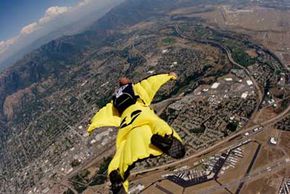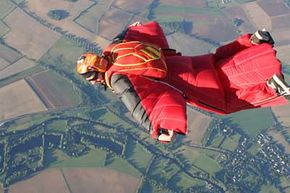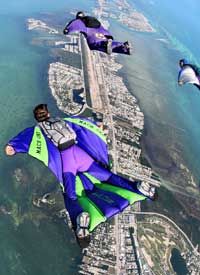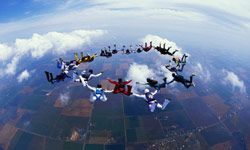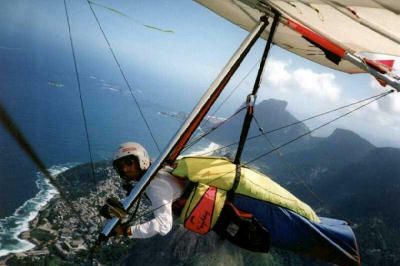If you've ever dreamt of soaring through the air like a superhero, you're not alone. Dreams of flying have captivated human imagination since prehistoric times. Even with the advent of aircraft and the increasing availability of air travel, the ancient question stays with us: What if we could simply spread our arms and fly like a bird?
For centuries, early flight pioneers tried to achieve this very feat by attaching artificial wings to their arms and backs. But just as the myth of Icarus ended with the Greek hero falling to his death, history books are filled with tales of enthusiastic pioneers leaping from high places, wings spread -- and plummeting back to the Earth.
Advertisement
Today, the dream is a reality. Resembling something between a flying squirrel and a snow angel, the wingsuit allows skydivers and BASE jumpers to leap out into the void, spread their arms and soar through the air.
In a sense, wingsuit flying is a cross between skydiving and hang gliding. Like both of these activities, wingsuit flying requires the flyer to either jump out of an aircraft or off a precipice to achieve a high enough altitude. While hang gliders can coast in for a safe landing, wingsuit flyers have to deploy their parachutes and float the rest of the way to the ground -- they simply can't reduce their speed fast enough for a safe landing without the use of a chute.
But, until the moment they pull their parachute chord, wingsuit flyers can soar horizontally at high speeds and perform aerial acrobatics -- all while descending at a rate much slower than that of a typical skydiver.
So, why is this flying and not just falling in a wacky costume? Read on to discover how physics, design and decades of experimentation have allowed wingsuit flyers to own the skies.
Advertisement
